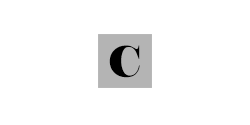In 2019, the California legislature passed a law, known as Senate Bill 326 (SB 326 for short), requiring that all condominium associations with three or more units regularly conduct an inspection of their complexes’ “exterior elevated elements” (EEE). The first deadline for these inspections to be completed is January 1, 2025. After that, inspections must be completed every nine years.
You may have heard SB 326 dubbed as the “Condo Balcony Inspection Law.” While this description is helpful, it doesn’t encompass all of what the law actually mandates be inspected. It’s not just balconies in condo complexes that now need regular inspections—its all exterior elevated elements for which the condo association or HOA is required to maintain and repair. This includes balconies, as well as exterior staircases, walkways, decks, porches, and entry structures that are more than six feet above the ground and are intended to support humans.
As a licensed architect in Long Beach, Grisafe Architecture is qualified to complete the necessary inspections to keep condo associations in compliance with this new law. We are offering SB 326 inspection services throughout Long Beach, California and the surrounding areas.
Because this is a new law, those who are in charge of condo associations or HOAs understandably have a lot of questions about how to be in compliance with SB 326. Below, we are answering some of the most common questions we get about the Condo Balcony Inspection Law and what it requires of condo associations and HOAs.
Does Every Balcony and EEE in a Condo Complex Need to Be Inspected According to SB 326?
Fortunately, a condo association or HOA does not have to pay to have every exterior elevated element their complex inspected. The bill requires that a “random and statistically significant sample of exterior elevated elements for which the association has maintenance or repair responsibilities” be inspected. However, the bill also requires that the inspector be able to “provide 95 percent confidence that the results from the sample are reflective of the whole, with a margin of error of no greater than plus or minus 5 percent.”
In addition, only those EEEs that are “supported in whole or in substantial part by wood or wood-based products” need to be inspected for the purposes of this law. The load-bearing elements, as well as the associated waterproofing systems that protect the wood from exposure to water, all need to be at least visually inspected. Any elements that appear to be compromised require further inspection.
Who Is Qualified to Complete the EEE and Balcony Inspections Required by SB 326?
SB 326 requires that all inspections be completed by a licensed structural engineer or licensed architect. However, it should be noted that not every structural engineer or architect in Long Beach is willing to complete these inspections. Since the process requires a thorough understanding of the new law, as well as the generation of a detailed follow-up report, not every qualified professional wants to take the time away from his or her regular service offerings to provide condo balcony inspections. Condo associations need to look for a qualified professional who is specifically offering condo balcony inspection services, such as Grisafe Architecture.
Please note that the qualified inspectors for SB 326 are more limited than the qualified inspectors for a similar law that applies to apartment complexes (SB 721). SB 721 allows general contractors to complete inspections, while SB 326 does not.
Who Pays for the Inspections Required by SB 326?
The condo association or HOA is responsible to pay for the inspection of condo balconies and other exterior elevated elements. They are also responsible for repairing any issues that the inspection uncovers in a timely manner.
What Will Condo Associations Get from the Balcony Inspector at the End of the Process?
Following the completion of the inspection of a condo complexes’ balconies and EEEs, an inspector will produce a report that outlines his or her findings. That report will also be filed with the local code enforcement agency within 15 days of its completion.
The report will include the inspector’s findings, as well as any recommendations for repairs. It will also provide condo associations with an estimate of the remaining useful life of the EEE’s load-bearing components and waterproofing systems.
The condo association or HOA must keep this report on file for at least two inspection cycles.
If any EEE in the condo complex is deemed unsafe, the condo association must take immediate action to prevent anyone from using it until repairs are made and approved by the local code enforcement agency. Grisafe Architecture can recommend local, reputable general contractors who can complete any repairs, if needed.
What Happens If the Balcony Inspections Required by SB 326 Are Not Completed by the Deadline?
For all but the newest condo complexes in California, balcony inspections are required to be completed by January 1, 2025. As of this writing, the City of Long Beach, California has not stated what the fines or penalties will be for failing to comply with the new law by the deadline, but we anticipate that they will be steep! We don’t want to be too cynical, but we can see cities and counties using this new law as a way to make some easy money, and since the law allows local jurisdictions to dictate the fine structure, they can charge condo associations and HOAs whatever they want for being out of compliance. There’s no reason why the City of Long Beach couldn’t set something up that fines an association for every day that their balconies have not been inspected after the deadline!
We anticipate that as the balcony inspection deadline approaches—and even after the deadline passes— qualified inspectors will be very busy with urgent inspection requests. We encourage condo associations and HOAs to not wait until the last minute, or until they get a letter notifying them that their condo complex is out of compliance with the law, to schedule an inspection! Those that do might be subject to rush fees by the inspector, while also being subject to fines and/or penalties.
How Much Does Grisafe Architecture Charge for Long Beach Balcony Inspections?
The cost for Grisafe Architecture to come out and inspect the balconies and other exterior elevated elements in a condo complex varies. Contact our Long Beach office for a quote.
Please note that we do have minimums that must be met for us to take on a Long Beach balcony inspection project, which are $3,000 per property or $500 per exterior elevated element. There may also be additional travel and mileage charges, depending on where the property is located. We offer timely, thorough inspection services that will ensure your condo complex is in compliance with SB 326. Contact us to schedule your inspection.







